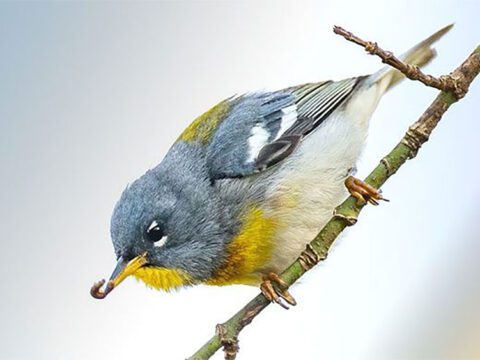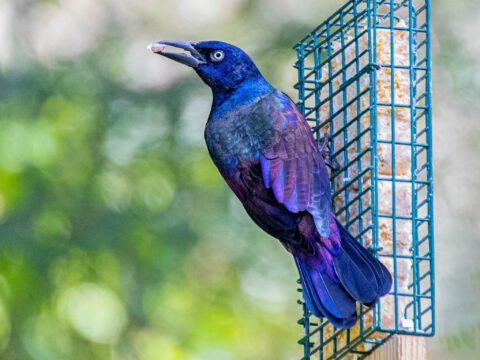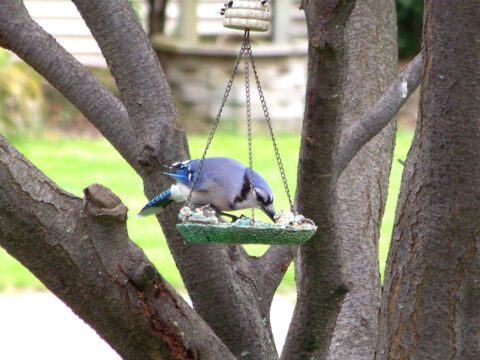Recording Mauritius: Tropical Island Sound-Check
By Jon Erickson November 9, 2009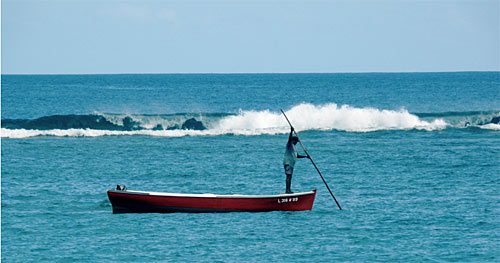
On the third morning after arriving on Mauritius, I woke up invigorated and refreshed. Unfortunately, it was 2:30 in the morning. Instead of fighting it, I decided to befriend the jetlag and put on a pot of coffee.
My wife and I are living in Flic en Flac on the western side of the island. The beach here sprawls along the coast, protected from the pounding of the Indian Ocean by a coral reef that lies several hundred yards offshore. The beach is covered with European holidaymakers, but plenty of locals are present, too, underneath the myriad snorkels breaking the surface of the water. Mauritius is well known for its mixture of cultures and religions, and it is not uncommon to see a group of Hindu worshipers offering flowers, clay idols, and coconuts into the ocean, or a Muslim woman snorkeling in full burka.
For a sound recordist like me, one unfortunate byproduct of this tourist town is the ever-present noise from vendors, taxi men, diesel trucks, scooters, barking dogs, etc. But, at 2:30 in the morning, the noise is at bay. I decide that this is a good time to check my equipment and see if everything survived the 25-hour flight from the States.
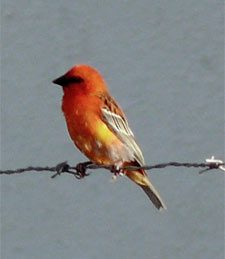 Bringing the various microphones and field recorders onto the patio, I focus on the massive tamarind tree hanging over our apartment building. During the day, birds create such a cacophony that even the diesel lorry with a punctured exhaust is in danger of being drowned out. The primary ruckus-maker is good old Passer domesticus. But many of the island’s other species gravitate to the tree; the Madagascar Fody (pictured), Red-whiskered Bulbul, Common Myna, Spotted Weaver, and, to my surprise, a pair of macaque (monkeys). But right now, even the tree is silent.
Bringing the various microphones and field recorders onto the patio, I focus on the massive tamarind tree hanging over our apartment building. During the day, birds create such a cacophony that even the diesel lorry with a punctured exhaust is in danger of being drowned out. The primary ruckus-maker is good old Passer domesticus. But many of the island’s other species gravitate to the tree; the Madagascar Fody (pictured), Red-whiskered Bulbul, Common Myna, Spotted Weaver, and, to my surprise, a pair of macaque (monkeys). But right now, even the tree is silent.
Switching on the recorder and putting on the headphones, I am happy to see and hear that everything is working. Turning up the gain, I can hear some distant details that I wouldn’t be able to pick up with a naked ear: some dogs barking near the beach, an impatient rooster, the waves hitting the nearby jetty. The barking escalates and I begin to wonder what’s going on. I decide to let my imagination run freely and dub this test recording “dogs chasing monkey.” Shortly afterward, I record my second masterpiece “monkey chasing cat.” Two recordings destined for my personal collection only.
With the equipment checked out and working, I start imagining the recording field trips to come. With erratic buses, expensive taxis, and the prospect of theft looming over any bike or scooter I might buy, there’s some planning to be done. I’m hoping the local conservationists in the Mauritian Wildlife Foundation can help out. Since the 1980s this foundation has been instrumental in bringing back many of the island’s endangered bird species from the brink of extinction, including the Mauritius Kestrel and the famed Pink Pigeon, which at one point numbered only 10 individuals. I am eager to meet with them to see, first hand, the work that they are accomplishing, and to ask some advice about my own project.
Outside of the more elusive endemics, the island is rich in interesting birds. My initial impression is that nearly any abandoned lot will reveal a decent number of species. Fortunately, I live near Black River Gorges National Park, home not only to the kestrel and Pink Pigeon, but also the Mauritius (or Echo) Parakeet, the Mauritius Cuckoo-Shrike, and the Mauritius Bulbul. It’s only a short bus ride followed by a 3-mile hike to the visitor center.
I’m hoping that, by the end of the week, I will begin producing some recordings that will rival “dogs chasing monkey” and “monkey chasing cat.”

All About Birds
is a free resource
Available for everyone,
funded by donors like you
American Kestrel by Blair Dudeck / Macaulay Library

